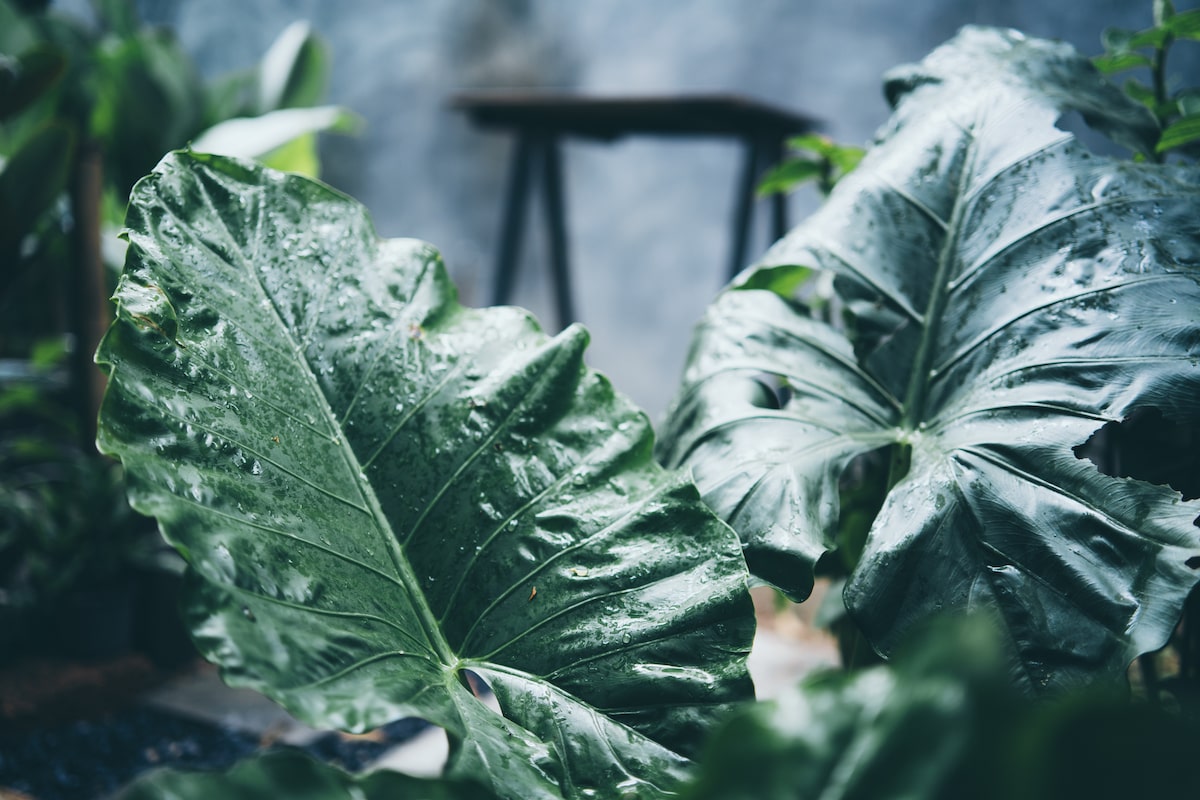What’s the first word that comes to mind as you read the word Giganteum? Giant, Enormous, or Mammoth? It turns out that the Philonderon Giganteum is true to its name!
The Philonderon Giganteum is not a delicate accent plant; do not expect it to appear subtle in your living space. This plant is a bold filler!
The Philonderon Giganteum extends its gigantic Elephant-ear shaped foliage to fill out vacant spaces and tint them with hues of luscious green. This giant grows fast and tall as long as it is provided with the key necessities.
Philonderon Giganteum belongs to the genus of ‘Philonderons’, the knowledge of which is sparsely available.
However, with meticulous research and surfing, we have prepared for you the ultimate guide on growing the Philonderon Giganteum.
Table of Contents
Meet The Philonderon Giganteum: Basic Knowledge And Origins
The top surface of the Giganteum’s leaves is gorgeous, but to have a look at its intricate transport network one must upend the leaf. You will find a complex pattern of interconnected veins that slightly bulge out.
The leaves are not pinnated, they are rather heart-shaped.
The Philonderon Giganteum is native to the Caribbean islands as well as some parts of South America.
Here are some basic key pointers about The Philonderon Giganteum:
| Family Type | Philonderons |
| Common Name | Elephant Ears |
| Botanical Name | Philonderon Giganteum |
| Plant Type | Araceae – Arums |
| Size | 2 ft long leaves |
| Native Area | Caribbean Islands |
| Sun Exposure | At least 70% of sun exposure |
| Soil Consistency | Rich but loose potting mix |
| Flower Color | Evergreen |
| Toxicity | Toxic to animals and humans |
| Common Pests | Mealybugs, Shore flies, Aphids, Moth worms, Thrips, Scales, and Fungus gnats |
Varieties of The Philonderon Giganteum
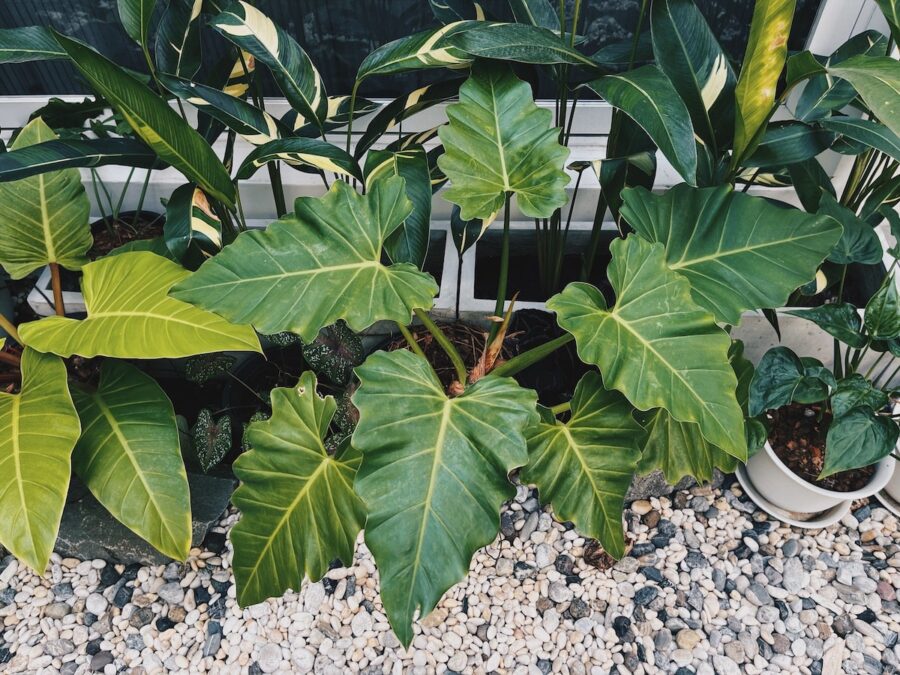
The Philonderon family is vast and widespread. Some of the varieties that closely resemble the Philonderon Giganteum are discussed below;
Philonderon Giganteum Variegata
Giganteum Variegata is very much similar to the Philonderon Giganteum. However, its leaves are variegated, hence the name.
Its fast growth rate is to be met by active and regular pruning sessions.
This variety is rare and expensive.
Philodendron Giganteum Blizzard
This is yet another variegated cultivar similar to the Giganteum. Its leaves reach humongous sizes, up to 6 feet tall!
This cultivar is a climber. It can climb rocky terrains. However, when grown indoors, these plants lose their climbing attribute.
How to Care for The Philonderon Giganteum

This plant is absolutely gorgeous, and its size is mesmerizing. Its ability to occupy empty, hollow-looking spaces is what makes it so special.
However, if you are a beginner in horticulture or gardening, you might want to put a hold on growing the Philonderon Giganteum.
This is a high-maintenance plant. Its enormous size requires frequent and regular care.
Sunlight Exposure
This is a sun-loving tropical plant. One can easily judge by the colossal size and rich green color of its leaves that the Philonderon Giganteum demands relatively more care and nutrition.
It requires at least 70% sunlight to thrive. Low filtered sunlight is the approach you want to go for if you plan on growing this indoors.
This plant can afford some shade, but its rich green color will lack luster and vibrancy as a result.
Soil
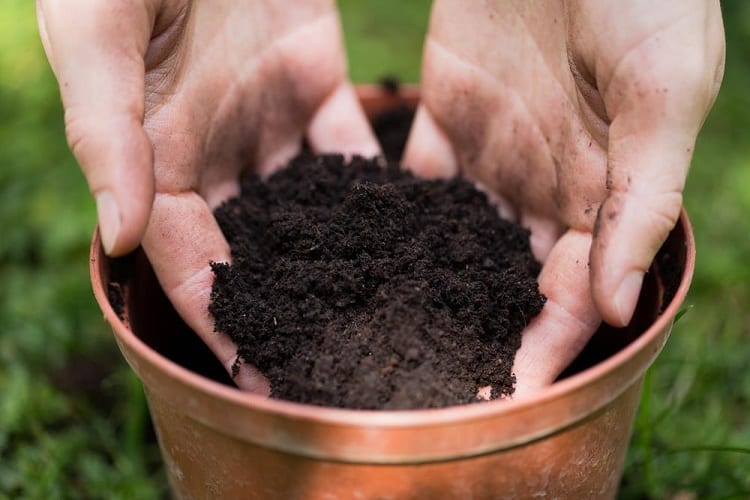
Organic and loose potting mix is the perfect choice of soil for the Philonderon Giganteum. Most of the potting mixes will contain sphagnum peat moss, which ensures ideal conditioning of the soil.
Make sure that the soil is well-drained.
It is important to mention that this plant is much easier to grow outdoors in the ground.
Water
This plant is slightly moody. It demands a good balance between moisture and dryness.
It is a common debate to allow the soil to dry before watering the Philonderon Giganeteum. However, the truth is that this plant has a tropical origin and thus loves moisture at all times.
You should water it every other day during the summers and twice a week during the winters.
Temperature and Humidity
Philonderon Giganteums thrive near the equator, so it is best to mimic the climate of that region. A temperature between 55 to 80 degrees Fahrenheit fares this plant well.
At least 60-65% of humidity level is required by the Philonderon Giganteum.
Fertilizing Frequency
As mentioned earlier, growing this plant in the ground is easier because it requires relatively less maintenance. A soil rich in organic matter, manure, or decomposed bark requires little to no fertilizer.
Conversely, a bi-monthly fertilizing frequency is to be adopted while growing the Philonderon Giganteum indoors.
Pruning The Philonderon Giganteum
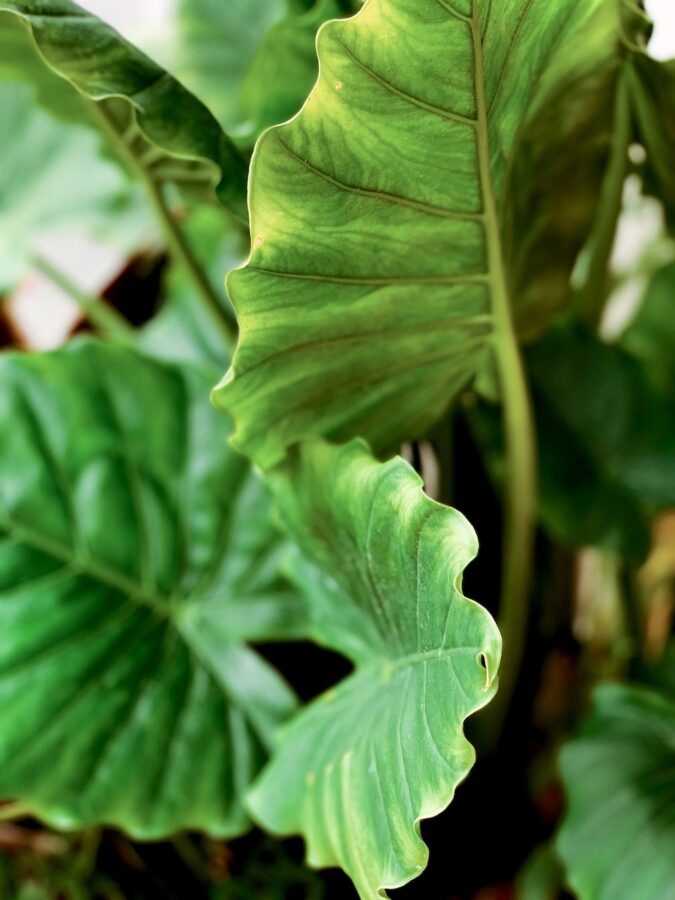
Any discolored leaves, worn-out stems, and expired aerial roots are to be pruned with sterilized pruning shears.
Although regular pruning is not mandatory, you may consider it for giving your Philonderon a clean, sharp look.
Propagating The Philonderon Giganteum
One of the most challenging aspects of growing a Philonderon Giganteum is its propagation. The methods of propagation are many folds complex than its other climbing counterparts.
We will be going through two methods of propagating the Philonderon Giganteum.
Air-Layer Method
You’ll need several transparent plastic bags, rubber bands, and sphagnum moss for the Air layer method.
Create holes at the bottom of the plastic bags and fill in some sphagnum peat moss at the bottom part.
Locate a small aerial root amongst the older leaf nodes of the plant.
Cut the upper part of the bag; this will create flaps that you must roll around the stem.
Place the sphagnum moss-filled bag against the root on the stem and wrap the flaps around it.
If you witness growth within a few weeks, it means you have successfully propagated the Philonderon Giganteum!
If you’re finding the instructions hard to follow, consider watching this video on propagating the Philonderon Giganteum.
Basal Branch Propagation
The parent plant branches out at the base; this will cause a root to fall into the soil.
If these roots manage to grow, then you must carefully cut off a branch from the parent plant.
And if these roots develop a tug back, your propagation method has been successful.
Repotting The Philodendron Giganteum
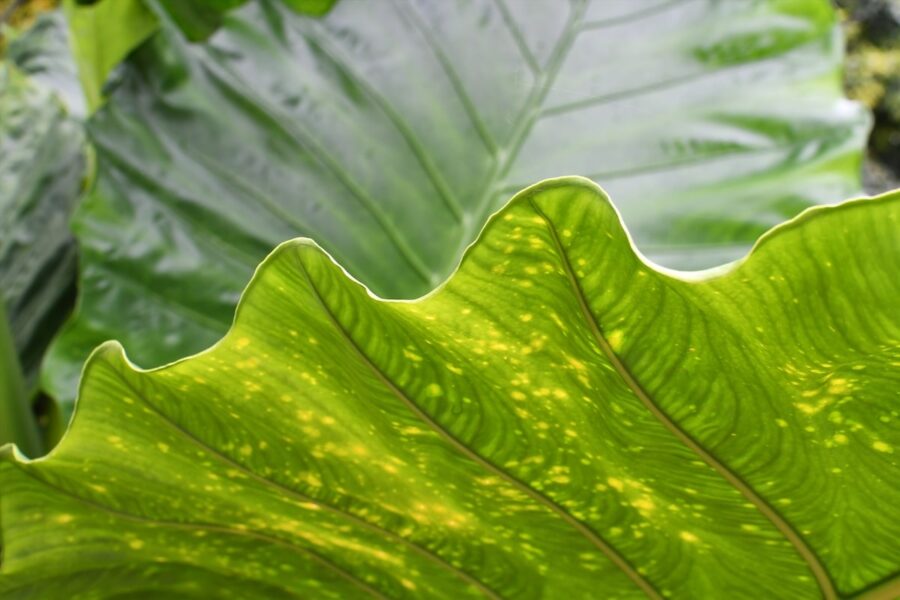
This proliferative plant requires repotting when the roots start to pop out of the container holes.
You must remove the entire plant with the root ball intact and shift it to a larger-sized container.
Repotting frequency is usually once every three years.
Challenges & Solutions
Patchy and tan leaves
Tan patches on leaves of the Philonderon Giganteum are indicative of an infection. The infective agent is either Erwinia blight or Pseudomonas.
This infection is contagious to the surrounding plants, and infected leaves must be eliminated as soon as possible.
Once infected, keep the plant in isolation until infective symptoms resolve completely.
Dark patches on leaves
This may result from a draft. Try moving the plant to a warmer area with high humidity to check if symptoms resolve.
Yellow, wilted leaves
Yellow leaves are indicative of a fungal infection. You should remove the infected leaves to avoid fungal spread.
Brown or yellow leaves
Brown leaves indicate dehydration. Increase the watering frequency and remove the affected leaves.
Pale leaves
This means your Philonderon is not getting enough sunlight.
Ask Away: The FAQ Section
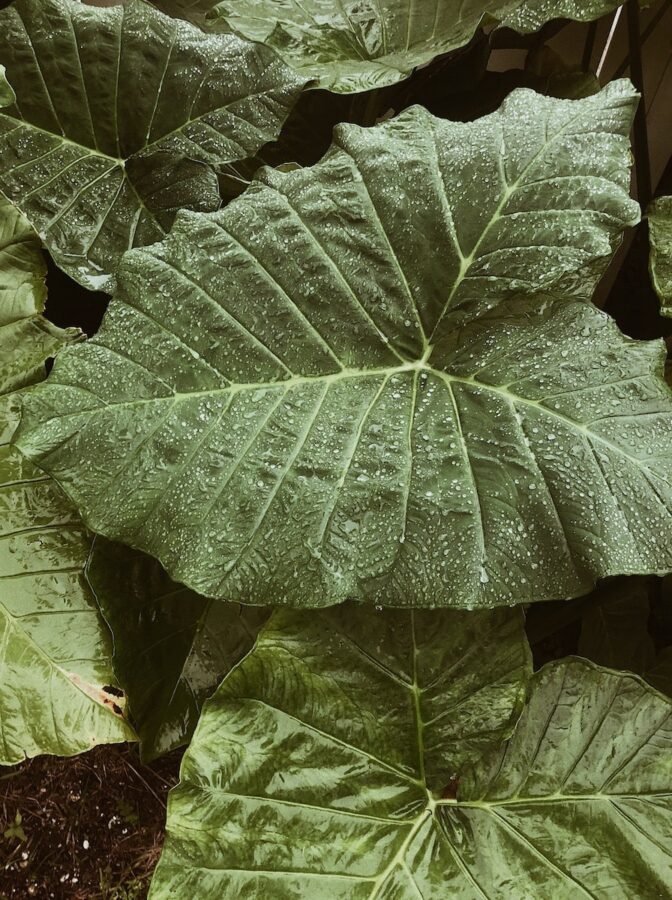
A Philonderon Giganteum can grow up to 4-5 feet tall, but it’s the leaf size that makes it look magnanimous.
The Philonderon Giganteum is one of the fastest and largest climbing plants in the world.
A Philonderon Giganteum will take several months to reach its mature size. Some of them mature within a month or two.

